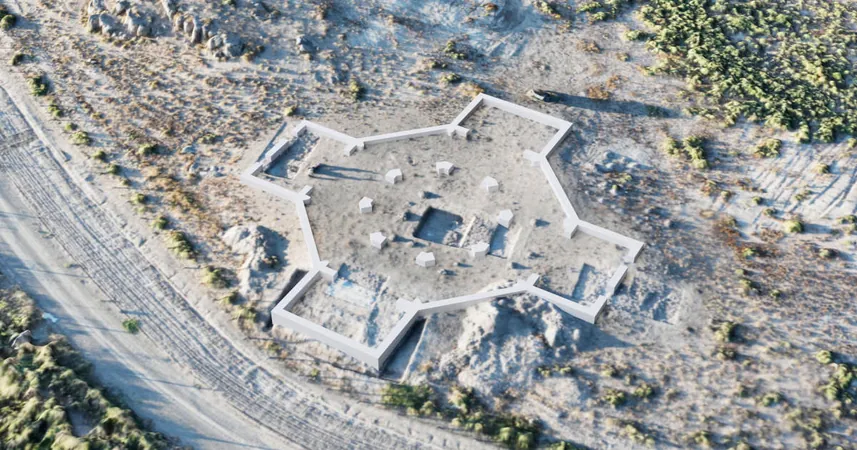
Archaeologists Uncover 2,000-Year-Old Armenian Church: A Groundbreaking Find for Early Christianity!
2024-10-14
Author: Yan
Summary of the Discovery
In an astonishing revelation, archaeologists have discovered the remnants of an Armenian church that dates back nearly 2,000 years. This remarkable structure is not only the oldest of its kind found in Armenia but is also regarded as one of the oldest churches in the world. The discovery, announced by Germany's University of Münster in collaboration with the Armenian Academy of Sciences, has been hailed as a 'sensational testimony to early Christianity in Armenia.'
Location and Archaeological Context
The significant finding was made during excavations in Artaxata, an ancient city that once flourished as a commercial hub and served as the capital of the ancient Armenian kingdom for several centuries. This archaeological endeavor is part of the larger Armenian-German Artaxata Project, initiated in 2018, which aims to explore and study the rich historical landscape of the region.
Dating and Historical Significance
Experts believe that the church discovered is from the 4th century A.D., aligning with the era of the construction of the renowned Etchmiadzin Cathedral in Armenia, widely considered the first cathedral of the ancient kingdom and often cited as the oldest cathedral globally. This connection underscores the significance of the newly unearthed church in understanding early Christian practices in the region.
Architectural Features and Design
The architectural design of the church, as described by Mkrtich Zardaryan from the Armenian Academy of Sciences, features an octagonal shape with rectangular chambers extending from four of its sides, making it the first known octagonal church in Armenia. Zardaryan points out that this architectural style is typically found in the eastern Mediterranean, dating back to the same period, suggesting a blend of cultural influences that shaped early Armenian ecclesiastical architecture.
Construction Materials and Techniques
The ancient church measured approximately 100 feet in diameter and originally featured mortar flooring crafted from a mixture of sand and cement. Walls constructed from thick slabs of terracotta, a clay material that was produced in ancient regions like Greece and Italy, added to the grandeur of the structure. Decorative elements made of imported terracotta remnants found at the site suggest that the church was once adorned in a lavish manner, akin to practices in contemporary Mediterranean cultures.
Further Findings and Continued Excavations
Additionally, researchers uncovered remains of wooden platforms within the ruins, supporting their findings through carbon dating, which confirms the church's ancient origins. This discovery not only provides insights into the architectural advancements of the time but also sheds light on the cultural and religious practices of early Christians in Armenia.
Conclusion and Future Prospects
As excavations continue, this ancient site in Artaxata promises to reveal further secrets of the past, inviting the world to witness the early roots of Christianity in one of its oldest centers. Stay tuned for more updates on this thrilling archaeological journey!






 Brasil (PT)
Brasil (PT)
 Canada (EN)
Canada (EN)
 Chile (ES)
Chile (ES)
 España (ES)
España (ES)
 France (FR)
France (FR)
 Hong Kong (EN)
Hong Kong (EN)
 Italia (IT)
Italia (IT)
 日本 (JA)
日本 (JA)
 Magyarország (HU)
Magyarország (HU)
 Norge (NO)
Norge (NO)
 Polska (PL)
Polska (PL)
 Schweiz (DE)
Schweiz (DE)
 Singapore (EN)
Singapore (EN)
 Sverige (SV)
Sverige (SV)
 Suomi (FI)
Suomi (FI)
 Türkiye (TR)
Türkiye (TR)